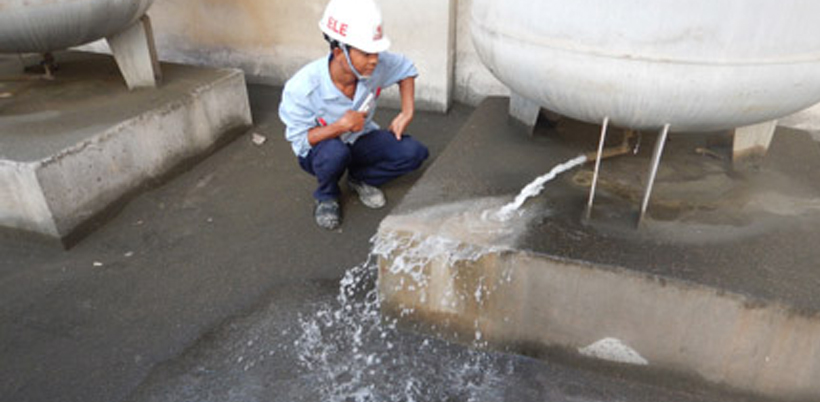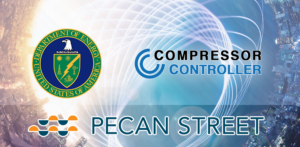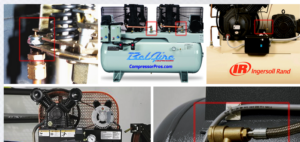Reciprocating air compressors are essential on-site utilities that intermittently use electricity to run pumps, compressing, storing, and releasing energy on demand. While managing compressors is not inherently difficult, it does require consistent attention. One of the most critical aspects of compressor management is dealing with the condensate that forms when air is compressed. As air is compressed, the water vapor present in the air condenses and pools inside the expansion tank. If not properly drained, this water can increase humidity levels and infiltrate the air network and air tools, leading to a host of problems.
The presence of water in the air network is a critical concern, as most tools and accessories, including pressure regulators, are not made with stainless steel and are highly susceptible to internal rusting. Rust formation within these components can lead to dangerous situations, such as the explosion of an over-filled tire in a garage. To ensure safety, improve air quality, and lower costs, it is essential to maintain low humidity levels in the air network.
While in-line systems like moisture traps and air dryers can be used to remove humidity from the air network, they should be considered a last resort option. Relying on these systems as the primary method of air drying significantly increases electricity costs and leaves little room for error. Instead, the focus should be on preventing humidity from entering the compressed air network in the first place.
The question that plagues owners and operators of air networks is, “What is the best way of preventing moisture content from entering the compressed air network?” The answer lies in the effective management of condensate that pools during the air compression process.

Traditionally, there are two methods for managing condensate in compressed air systems. The first involves employee labor, where a worker physically opens a valve to drain the tank on a schedule. However, this method is prone to human error and can be unreliable. The second method uses time-based drain valves that automatically open at preset intervals for a defined length of time. While these valves may seem like a convenient solution, they operate without knowledge of the humidity content of the air being compressed, leading to inefficiencies and potential exposure risks.
Intelligent condensate management systems offer a low-cost automation solution for reciprocating air compressors that eliminates the need for human interaction and intelligently removes condensate to prevent it from entering the network. By leveraging advanced sensors and mathematical algorithms, these systems measure the humidity and temperature of the air during compression and calculate the water buildup that pools in the tank. This allows for precise and efficient condensate drainage, ensuring maximum removal with the least energy expense.
Intelligent condensate management systems have been independently tested and validated by the U.S. Department of Energy (DOE). In rigorous testing, these systems demonstrated a remarkable 23% reduction in power usage for a single pump reciprocating air compressor. Additionally, the testing revealed a groundbreaking 100% reduction in moisture content within the compressed air system, effectively eliminating the need for costly air drying equipment in many applications.
By utilizing math to accurately calculate the presence of condensate, intelligent condensate management systems prevent humidity buildup through expulsion rather than removal through dehumidification, which always comes with a substantial energy cost. This innovative approach not only improves safety by reducing the risk of rust exposure in sensors, tools, and accessories but also reduces wasted air and energy, ultimately saving money for compressed air network owners.
The automatic drain feature of intelligent condensate management systems provides peace of mind, ensuring that compressor assets are maintained in proper condition to extend their lifespan. With the backing of the DOE and the impressive results from independent testing, these systems emerge as game-changing solutions for the compressed air industry, setting new standards for efficiency, safety, and environmental stewardship.
As businesses increasingly prioritize sustainability and seek to reduce their carbon footprint, the ability of intelligent condensate management systems to optimize energy consumption and minimize waste makes them an attractive choice for forward-thinking organizations. By adopting this innovative technology, companies can gain a competitive edge, improve their bottom line, and contribute to a greener future.
In conclusion, intelligent condensate management systems represent a paradigm shift in the way compressed air networks are maintained and optimized. By harnessing the power of advanced sensors, mathematical algorithms, and real-time data analysis, these systems revolutionize the industry, delivering unparalleled efficiency, safety, and cost savings. As the demand for sustainable and efficient industrial solutions continues to grow, intelligent condensate management systems are poised to become an indispensable tool for businesses seeking to stay ahead of the curve and thrive in an ever-evolving landscape.



